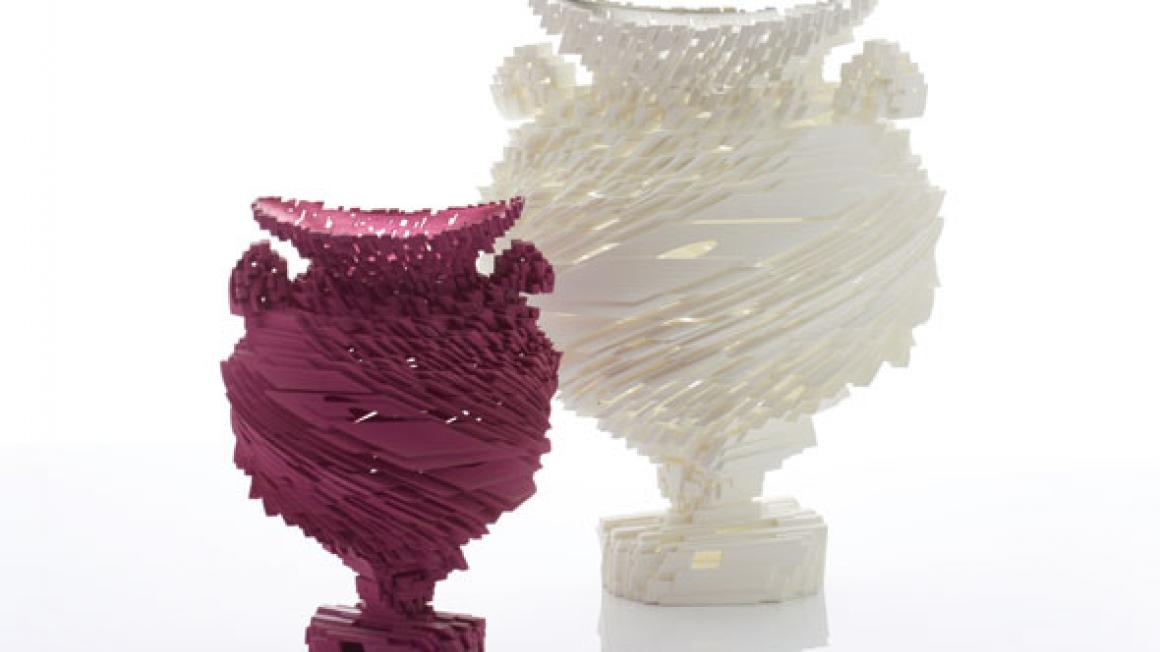Michael Eden: History Re-Printed
 Bath’s Holburne Museum is primarily a showcase for Sir William Holburne’s collection of 17th- and 18th-century art, but running alongside this fairly conventional offering is its more unexpected programme of contemporary art, which this winter features Michael Eden. Eden worked as a ceramist for 25 years before abandoning his potter’s wheel in favour of the latest digital tools in 2006. Now he makes sculptures designed on the computer and then digitally printed in high-quality nylon thread and finished with a smooth mineral or metal coating.
Bath’s Holburne Museum is primarily a showcase for Sir William Holburne’s collection of 17th- and 18th-century art, but running alongside this fairly conventional offering is its more unexpected programme of contemporary art, which this winter features Michael Eden. Eden worked as a ceramist for 25 years before abandoning his potter’s wheel in favour of the latest digital tools in 2006. Now he makes sculptures designed on the computer and then digitally printed in high-quality nylon thread and finished with a smooth mineral or metal coating. Eden’s installation is made up of a display of 30 or so of these vessels laid out in the ballroom gallery. It’s a beautiful room with elegant 18th-century proportions and one might expect Eden’s selection of tutti-frutti-coloured, unashamedly contemporary vases to grate. However, they sit surprisingly well here, their form and scale echoing that of the surrounding historical ceramics and metalwork. And this is the point of Eden’s work: although he uses the latest technology to create his vessels, they refer back to the history of ceramics. His first digitally modelled piece, The Wedgwoodn’t Tureen, was inspired by neo-classical form, as was his Bloom series; examples of both are on show here.
Alongside these earlier pieces, Eden is also exhibiting work inspired by the Holburne. The links between his Imari series and its 18th-century prototypes are perhaps the most obvious as they are displayed next to a showcase of the Japanese export ware. Eden’s pieces are in the same blue, red and gold palette and their chrysanthemum-patterned infilling echoes the rich surface decoration of the original china.
Other work is inspired by Eden’s fascination with the Industrial Revolution. The Holburne’s adjacent pleasure gardens were cut through by the canal and railway in the 19th century, marking what Eden sees as a marriage of art, science and technology. Several pieces here underline this theme including the Watt Vase, named after James Watt (1736-1819) and constructed out of portraits of the inventor digitally manipulated into a classical urn shape. Most of Eden’s pieces are in a type of urn form, and on leaving the exhibition I began to spot urns everywhere – on the banisters and even on the facade of the building – showing how Eden’s collaboration with the Holburne had jolted me into looking at the museum a little bit more closely.
Until 28 March at The Holburne Museum, Great Pultney Street, Bath: 01225-388569, www.holburne.org


